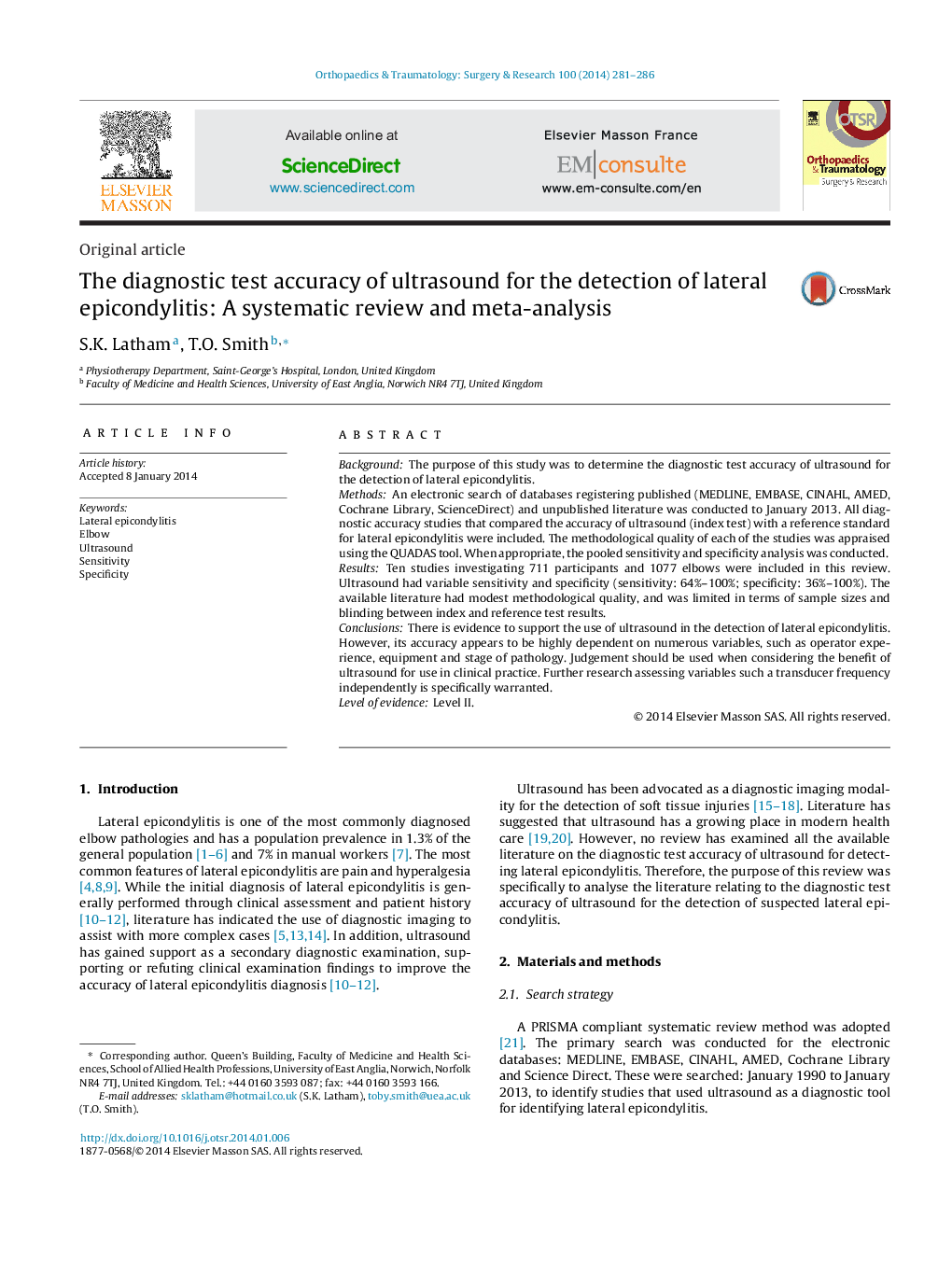| Article ID | Journal | Published Year | Pages | File Type |
|---|---|---|---|---|
| 4081543 | Orthopaedics & Traumatology: Surgery & Research | 2014 | 6 Pages |
BackgroundThe purpose of this study was to determine the diagnostic test accuracy of ultrasound for the detection of lateral epicondylitis.MethodsAn electronic search of databases registering published (MEDLINE, EMBASE, CINAHL, AMED, Cochrane Library, ScienceDirect) and unpublished literature was conducted to January 2013. All diagnostic accuracy studies that compared the accuracy of ultrasound (index test) with a reference standard for lateral epicondylitis were included. The methodological quality of each of the studies was appraised using the QUADAS tool. When appropriate, the pooled sensitivity and specificity analysis was conducted.ResultsTen studies investigating 711 participants and 1077 elbows were included in this review. Ultrasound had variable sensitivity and specificity (sensitivity: 64%–100%; specificity: 36%–100%). The available literature had modest methodological quality, and was limited in terms of sample sizes and blinding between index and reference test results.ConclusionsThere is evidence to support the use of ultrasound in the detection of lateral epicondylitis. However, its accuracy appears to be highly dependent on numerous variables, such as operator experience, equipment and stage of pathology. Judgement should be used when considering the benefit of ultrasound for use in clinical practice. Further research assessing variables such a transducer frequency independently is specifically warranted.Level of evidenceLevel II.
